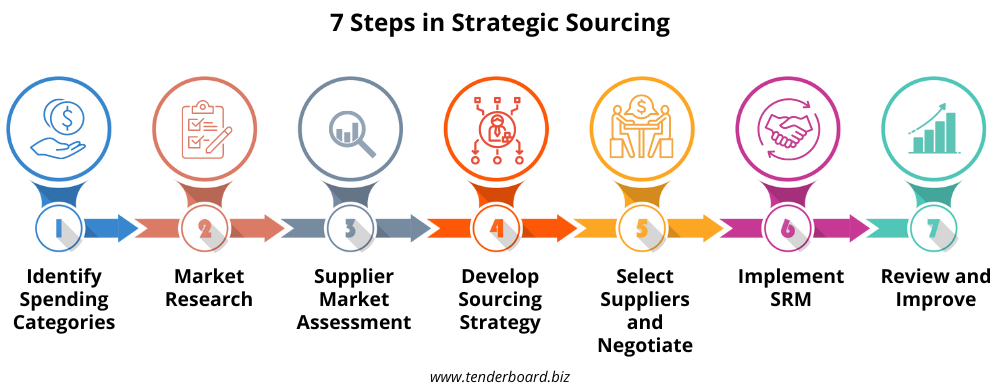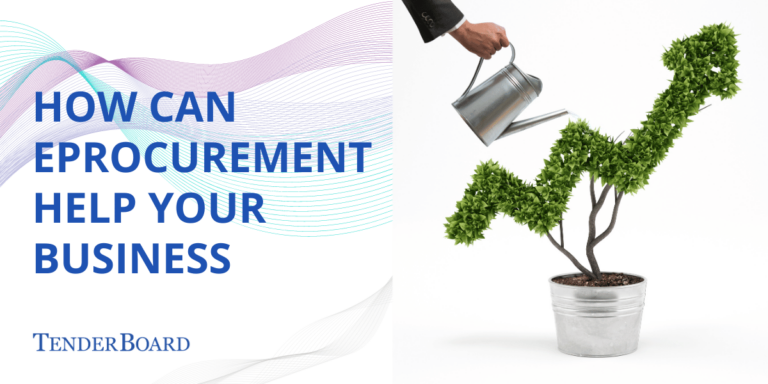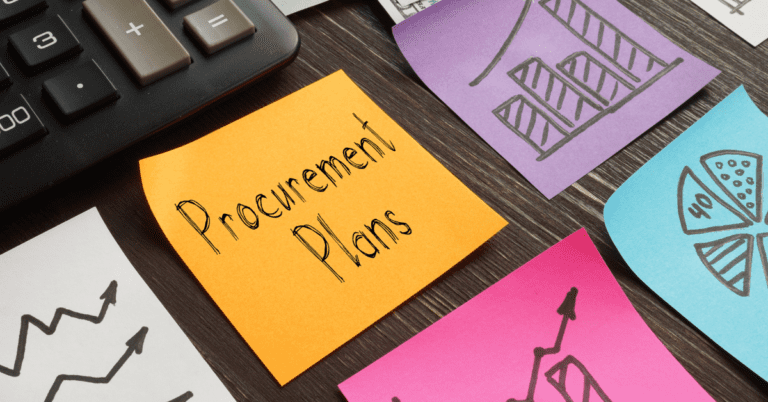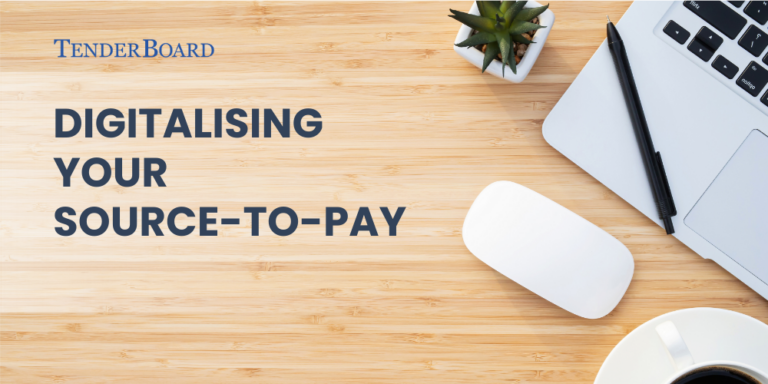What is Strategic Sourcing?
Strategic Sourcing is a process organisations implement to improve spend management and supplier relationships. It ensures goods and services required by the business are provided with the best value from the most fitting suppliers. This is performed through various strategies when looking for goods and services, where market conditions, value of spend, risk in the category, and the supply market character are considered and evaluated before the transaction.
Why is Strategic Sourcing Important for Your Business?
The objective of Strategic Sourcing is to increase value while mitigating costs and risk. Part of Strategic Sourcing involves analysing the total cost of ownership (TCO) of products and services. On top of the product/services’ cost, it would include fees for shipping, storage, maintenance and disposal. Understanding the TCO of your purchases allows businesses to make more educated purchases and generate bigger long term savings.
It also entails approaching supplier relationships with the perspective of building long-term relationships, rather than only concentrating on immediate cost savings. Organisations can enhance quality and delivery performance, save total procurement costs, and get access to cutting-edge technology and innovations by forging strong partnerships with their suppliers.
Strategic Sourcing is an essential element for any organisation that wants to optimise the effectiveness of their procurement efforts for better supplier relationships and bigger long term savings.
How Do You Implement Strategic Sourcing?
Implementing new processes into your organisation takes time and effort, but the long term benefits of Strategic Sourcing far outweighs the effort. We share about the the 7 steps to implement Strategic Sourcing below and how you could get started for your business.

1. Identify Spending Categories
Firstly, companies need to understand what their organization spends on so they can decide where to cut back or invest more. Use this process to identify important categories and areas of overspending. Develop strategies for successful spend management based on a risk analysis of selected spend categories.
2. Market Research on the Industry
Based on the spend categories identified, research the industry and identify potential suppliers. Assess their capabilities and understand market trends and conditions that may affect procurement decisions. This involves collecting and analysing information about the market,suppliers, competitors, industry trends, and market conditions.
3. Supplier Market Assessment
Develop predefined criteria for evaluation to assess the supplier’s ability to meet your organization’s requirements. Examples include assessing past performance, market share, and revenue to understand their industry standing and potential risks. Effective supplier assessments improve relationships and provide value for received products or services.
4. Develop Sourcing Strategy
Create a strategy for acquiring goods and services from the most effective suppliers with an evaluation criteria for supplier selection. Companies can gather information through an Expression of Interest (EOI) or Request for Information (RFQ) to assess the market’s ability to supply before sourcing via a tender, Request for Proposal (RFP), or Request for Quotation (RFQ).
5. Select Suppliers and Negotiate
Companies could use RFPs or RFQs to consolidate potential suppliers’ costs and offerings. These proposals are then are evaluated to select or shortlist suppliers for further negotiations. Negotiate a contract with the selected supplier to define the relationship’s terms and conditions. Balancing cost and quality, choose suppliers who provide the best value. The hiring process begins with the contracting process.
6. Build a Supplier Relationship Management Framework
Supplier Relationship Management (SRM) improves collaboration between an organization and suppliers, transforming the relationship into strategic value partners for long-term benefits. Continued communication after signing the contract is vital for staying updated with changes in implementation or delivery. SRM involves monitoring supplier performance, managing issues, and ensuring contract compliance.
7. Review and Improve
Assessment, analysis, and improvement are ongoing cycles that are involved in reviewing the strategic sourcing process. The sourcing procedure needs to be regularly monitored and enhanced by the organisation. This entails assessing supplier performance, identifying potential improvement areas, and making any necessary adjustments to the sourcing strategy.
More efficiency and cost savings can be achieved by concentrating on supplier relationship management, data analysis, and process optimisation, which will ultimately result in higher value for your company.
Conclusion
Implementing strategic sourcing into a company’s procurement process helps to improve overall procurement productivity. The 7 steps of strategic sourcing provides teams with an overview of market conditions and supplier management, allowing companies to choose strategic partnerships with suppliers for a win-win relationship. Routinely managing and reviewing sourcing and evaluation of suppliers also ensures goods and services received remain effective and consistent.
Adopting eProcurement Systems like TenderBoard can further improve procurement processes, with digitalisation and automation of your workflows. Systems can provide staff purchasing with Approved Vendor Lists (AVL) or pre-negotiated Contracts to ensure the company purchases from vendors that have been vetted by the procurement team. Having the system auto-route your Purchase Requests or EOIs for the necessary approvals before and after sourcing reduces the need for manually routing papers, and automated reminders are sent to decrease bottlenecks. Learn more about what we can do to help your sourcing here.













